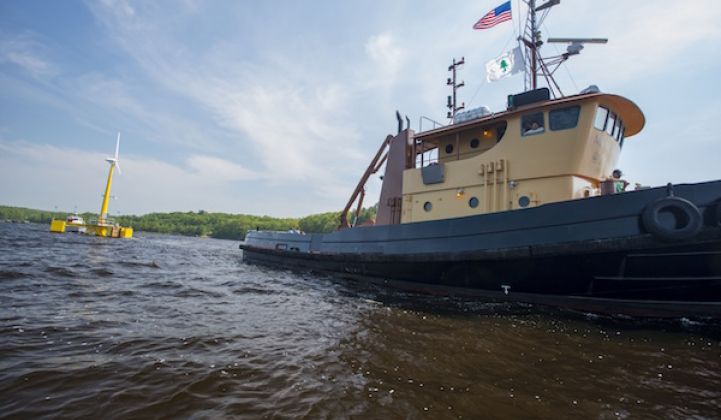Maine Aqua Ventus, the most advanced floating offshore wind project in U.S. waters, expects to announce a new investor by this fall, following the signing of legislation this week by Maine Governor Janet Mills requiring the state’s Public Utilities Commission to buy its power.
Interest in Aqua Ventus among bigger developers has surged since Mills’ election last year, said Habib Dagher, who leads the project as executive director of the Advanced Structures and Composites Center at the University of Maine.
Mills, a Democrat, has revived the fortunes of Maine’s promising renewable energy market, which had been stunted under previous Governor Paul LePage, a Republican and outspoken critic of wind turbines.
Earlier this year, in one of her first executive orders as governor, Mills axed a wind turbine moratorium put in place by LePage. Maine is a rarity in the Northeast in having large untapped potential for onshore wind. This week Mills followed up by approving bipartisan legislation directing the PUC to approve a power-purchase agreement for the 12-megawatt Aqua Ventus project, which will be built using two turbines off the coast of Maine, south of Monhegan Island.
“With the innovative work being done at the University of Maine, our state has the potential to lead the world in floating offshore wind development,” said Gov. Mills. “This long-overdue bill will move us in that direction.”
Mills also announced that Maine will begin working with the federal government and nearby states New Hampshire and Massachusetts to identify offshore wind zones on the Outer Continental Shelf along the Gulf of Maine, potentially opening a big new U.S. region for development.
Aqua Ventus is already supported by $40 million in grant funding from the U.S. Energy Department. In addition to UMaine, which holds a number of patents related to the unique "VolturnUS" floating concrete semi-submersible hull concept that will be used, the project’s backers include Maine construction firm Cianbro Corp. and France’s Naval Energies.
Ultimately, however, it will need another big investor to get over the finish line, and ideally one with experience in offshore wind development and operation.
“The goal is to announce an investor in the early fall,” Dagher told Greentech Media. “We shouldn’t have any problem — there’s a lot of interest in the project.”
Whichever developer buys into Aqua Ventus “gets to build the first floating project in the U.S., and potentially follow that with other projects as well, in Maine and beyond,” Dagher said. “Having that first-mover opportunity in the U.S. marketplace is important to a lot of developers.”
The project's latest timeline aims for financial close in early 2020, the start of construction in 2021, and commercial operation in 2022.
Although floating offshore wind is still in its infancy, it has drawn the interest of a number of the world’s leading renewable energy developers, including European giants like E.ON and Iberdrola's Avangrid. Last month European utilities Engie and EDP created a joint venture to merge their offshore wind activities, with floating projects expected to be a main area of focus.
Floating technology has the potential to open up development areas in waters too deep for traditional foundations. The California coast is seen as one of the most promising markets globally over the long run, with Japan and Hawaii also closely watched.
Aqua Ventus has faced a number of setbacks during its decade under development. It has been stalled since last year, when the PUC moved to reopen a previously agreed-upon “term sheet” outlining the price and conditions of its off-take agreement with utility Central Maine Power.
That term sheet, originally agreed in 2013, reportedly includes payment of $230 per megawatt-hour with an annual escalator over 20 years, much higher than what most new offshore wind farms receive, let alone onshore wind and solar projects.
But Aqua Ventus' supporters counter that the PPA would add less than $1 per month to the average electricity bill in Maine, while putting the state at the forefront of an important new renewable-energy market. Components for the project would be assembled in-state, and UMaine may be able to license its floating technology to other developers at future projects.
Mills' signature ensures an updated version of the PPA will go forward, barring any unforseen issues. The new law will go into effect in 90 days, meaning Aqua Ventus should have a PPA submitted by September, Dagher said, and it will “hopefully be approved soon thereafter” by the PUC.




